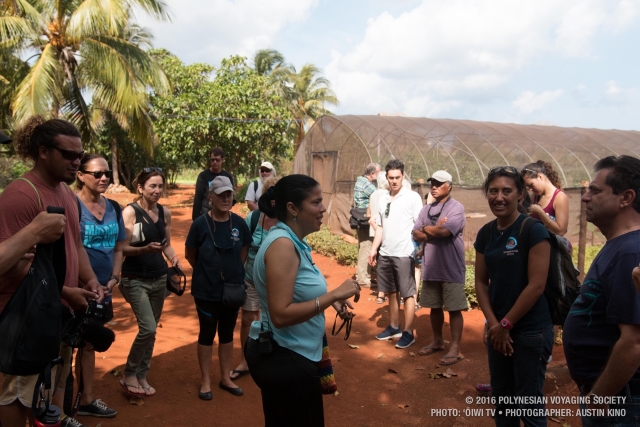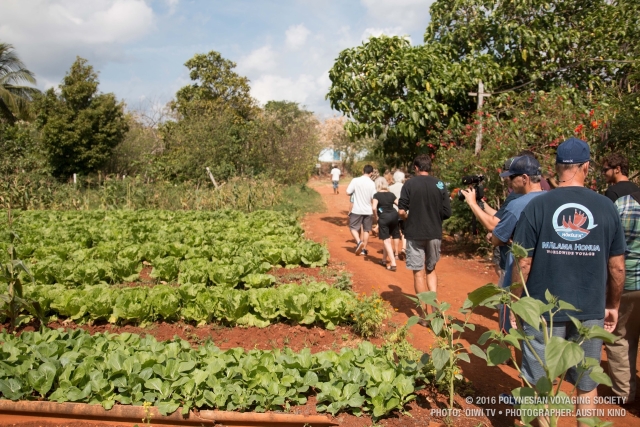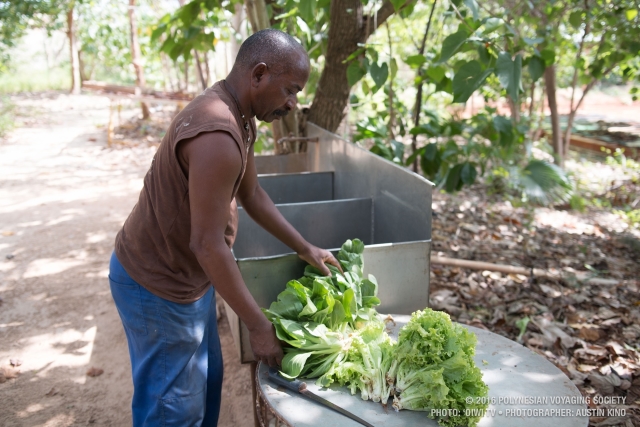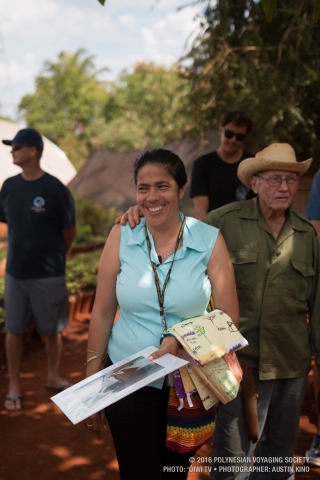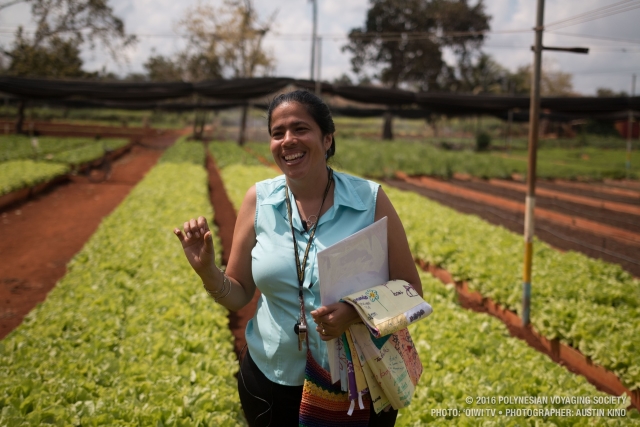
Crew Blog | Austin Kino: Viviero a La Mar
- Posted on 23 Mar 2016
- In Crew Blogs, Environment, Malama Honua Selects, Newsletter, Teachers
 Written by Austin Kino
Written by Austin KinoOn March 19th , 2016 the crew of Hōkūle’a spent their first official day exploring Cuba. With an early morning pickup from the Ernest Hemmingway Marina, crewmembers had their first opportunity to drive through the city and take in all of the new sights and sounds of a typical Cuban morning rush. Our first stop for the morning was going to be an urban garden named Viviero a La Mar. Upon our arrival to the community it was obvious that our destination was the morning hub of activity with local residents arriving to buy their organic fruits and vegetables directly from the market located at the edge of the farms perimeter.

Our host was a woman by the name of Isis Salcines who is a second-generation farmer whose father started Viviero a La Mar in 1991. In response to the peak oil crisis that took place in the nineties, Cuban residents needed to find a creative solution to provision their diets with fresh food that would not require extensive transportation. The solution became the urban garden model where community members like Mr. Salcines could be given up 29 hectares of land from the government to use for food production.

To this day the principal mission of Viviero a La Mar is to provide organic food and medicinal plants to the community and in doing so change the image of a farmer within the public’s perception. Isis shares with us the challenges of getting the next generation in Cuba to take an interest in the agriculture industry. With a variety of incentives to up and coming farmers that include a free five year education program, a weekly supply of food from the farm, and even free hair cuts for the men and pedicures for the woman the goal is to “make farming sexy” for the next generation to ensure the future of the urban garden model as a staple in every community.

Similar to the situation in Hawaiʻi, Isis was sad to report that currently 80% of the food in Cuba is imported. The bulk of the imports however, are products that are not traditionally a part of the Cuban diet such as wheat products like rice and bread. “ To gain food sovereignty we need to change the Cuban diet and mindset away from a colonized mindset back to an agriculturally based country”. With the rising threat of GMO companies taking an interest in Cuba, community farmers like Isis are working hard to preserve the knowledge of organic farming to remain self-reliant. Even in the realm of healthcare Viviero a La Mar enlists the help of its oldest employee. At the age of 86 this farmer is perhaps one of the last on the farm with the knowledge of how to prepare and prescribe naturopathic medicine directly from the farm to the people of the community.

Following a beautiful walking tour of the farm and learning from Isis about the many challenges and opportunities for the future of Cuba´s organic food production, the most powerful moment for the crew took place as we presented Isis and her most senior employee with a makana (gift) that included a signed photograph of Hōkūle´a and a peace blanket made by school children in Hawaiʻi. It was the first time Isis saw a photograph of Hōkūleʻa, and it was apparent that she instantly understood who we were as a group and the link between Hawaiʻi and Cuba that we had hoped to make. Overwhelmed by tears she translated to an older farmer what he was looking at in the picture and our shared mission of learning how to better stewards of our island earth. The older farmer lifted his hands above his head to make two thumbs up and in beautiful Spanish invigoratingly shared his hopes for a future of peace. Although the crew could not understand everything he said, I believe everyone that was in his presence knew that he was a treasure to his community as a living embodiment of Mālama Honua.
More than Adventure
Beyond a daring expedition, the Worldwide Voyage is quite possibly the most important mission that Hawaiʻi has ever attempted. As people of Oceania, we are leading a campaign that gives voice to our ocean and planet by highlighting innovative solutions practiced by cultures around the planet.
We could not have begun this great journey without your support, nor can we continue to its completion.

